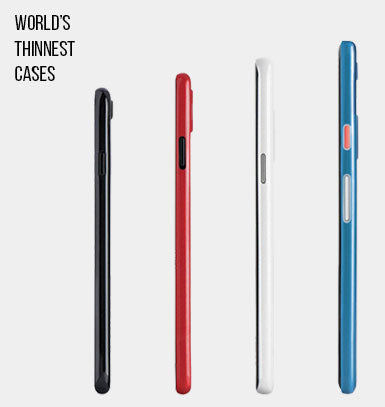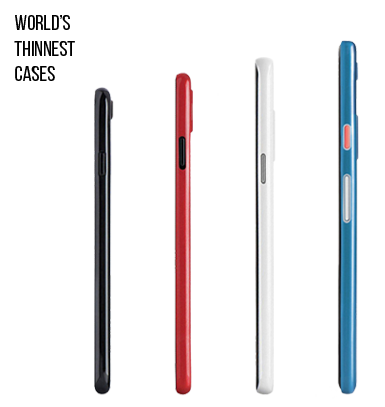From Mammoth to Mini, the Evolution of the Mobile Phone
For anyone born in the 80s and years following, it may be hard to imagine that prior to the invention of mobile phone technology, people were literally tethered to their analog phones for communication. While the telephone has played an essential role in our lives ever since the fateful day in 1876 when inventor Alexander [...]For anyone born in the 80s and years following, it may be hard to imagine that prior to the invention of mobile phone technology, people were literally tethered to their analog phones for communication. While the telephone has played an essential role in our lives ever since the fateful day in 1876 when inventor Alexander Graham Bell placed the first phone call, it has evolved with our ever-growing technology, and has slowly, but surely been replaced by cell phones. Bell's breakthrough didn’t just create a new gadget – it fundamentally changed the way we communicate and interact with each other and our world, and cell phone technology continues that change.
Almost 100 years later, another historic event occurred that sparked the beginning of a new communication evolution when Motorola Engineer Martin (Marty) Cooper placed the first call from what he described to competitor Joel Engel from Bell Labs as a “real handheld portable cell phone,” in April 1973. During the following four decades since that fateful call, mobile phones, then cell phones, and today, smartphones and other smart devices have become the indispensable communication technology of our time -- a trend experts see continuing and intensifying in the future.
Those portable technological marvels have not only become become an essential part of our interconnected world and interpersonal communication, but also have become invaluable as assistants, helping us do everything from paying our bills to opening our doors, and their indispensability will only increase with time. From advancements in mobile photography to the rise of SMS and messaging to the anytime, anywhere availability of online connectivity,
cell phones have been at the forefront of every cultural and technological change during the past 43 years. Let’s review the history of the mobile revolution and the defining trends in its evolution to the smartphones we use today.
The Brick

Mobile communication has come a long way from the ginormous $3,995 Motorola DynaTAC brick phone Marty Cooper designed that weighed in at a whopping 2.5 pounds and boasted an LED screen and a battery life of 20 minutes. This was the phone he used to make that historic first mobile call to rival Joel Engels.
It didn’t take long for the Motorola DynaTAC to show up on the big screen. The monster phone made its way into film in Gordon Gekko’s (Michael Douglas) hand in Wall Street (1987), but the small screen wasn’t to be outdone – the sa
me brick phone was sported by Zack Morris in the television series Saved By the Bell (1989). The phone has since become a collector’s item, and has been featured in period movies like the 80s retro thriller American Psycho with Christian Bale (2000).
The Clamshell
The first innovation of the portable device was the clamshell design pioneered byMotorola. The MicroTAC 9800X was introduced in 1989, and had a standard 12-button keypad, a red LED display, and a more reasonable size for mobility. Still running at around $2,500, the hands-free operation and smaller size were a hit. Mr. Green (Tim Roth) can be seen here on a MicroTAC in the 1992 cult classic Reservoir Dogs.
The StarTAC Flip
Reminiscent of the petite flip-form communicator Captain Kirk used in Star Trek, the clamshell phone design got a makeover in the mid-’90s. It lost some bulk, paving the way for our modern flip models. The Motorola StarTAC flip phone was designed to fit into a shirt pocket.
TheCandybar
Like its name implies, the candybar phone was about the same size and shape of a rather hefty candy bar. A very popular phone shape in the late 1990s, the candybar phone was simple and easy-to-use and featured a sleek shape. Nokia was the leader of this type of phone – their Nokia 5110 is considered a collectible classic, and was one of the first cell phones with optional replaceable faceplates.
The PDA

While not technically “mobile phones”, the ‘90s personal digital assistants (PDA) paved the way for touchscreen devices and pocket computing. The Palm Pilot, introduced in 1997, retailed for approximately $200-$300, and was the precursor to our modern smartphones. An industry game changer, the device sported cutting edge technology -- a virtual keyboard, internet connectivity, syncing capability and handwriting recognition.

The Razr
The uber-sleek, infinitely pocketable Razr flip phone by Motorola featured a slim profile and classic lines. Launched in 2004, the updated clamshell design was a hit with the style-oriented crowd.
The BlackBerry
Ever popular with the serious-minded business set, the RIM BlackBerry made its debut in late 1999, and quickly became the darling of the upwardly mobile with its BlackBerry-to-BlackBerry instant messaging and luxury status. The first models were like a mashup of a Palm Pilot with a cell phone.
The iPhone
The phone that Apple founder Steve Jobs sprung on an unprepared world in 2007 had many of the same features it does today, if a bit more clunky –it combined the technology, design and functions of an iPod, a mobile phone and an internet connection device, and threw in a camera for good measure. The rest really is history. Here’s Steve Jobs unveiling the revolutionary iPhone on January 9, 2007.
The Android

Once the release of the iPhone opened the door, it was just a matter of time until app-enabled smartphones were introduced to the market. Using Google’s open-sourced Android platform, manufacturers such as HTC, LG, Samsung and others quickly created devices which utilized the mobile operating system. The T-Mobile G1 (also known as the HTC Dream) released in 2008 was the first Android-powered cell phone offered to consumers.
The Future
Smartphones definitely aren't going anywhere soon. In fact, an estimated 2.08 billion people are expected to be using a smartphone in 2016. While we can count on future touchscreen phones to continue getting lighter, wider, more versatile and more powerful, they will still need protection from wear and tear. While some manufacturers have launched devices that are more resistant to in-climate environments, like Sony’s Xperia Z and Samsung’s waterproof Galaxy s5, smartphones of the future are still going to be vulnerable to drops, bumps, spills, and scratches. Find out how a tempered glass screen protector from Ultimate Shield can keep your smart device protected from damage eliminate touchscreen scratches and cracks.
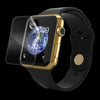 Apple Watch Series 1 / 2 / 3 Invisible Film Screen Protector
Apple Watch Series 1 / 2 / 3 Invisible Film Screen Protector 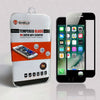 Apple iPhone 7/8/SE (Black) Tempered Glass Screen Protector
Apple iPhone 7/8/SE (Black) Tempered Glass Screen Protector 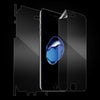 Apple iPhone 7/8/SE Invisible Film Screen Protector
Apple iPhone 7/8/SE Invisible Film Screen Protector 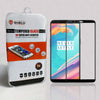 OnePlus 5T Tempered Glass Screen Protector (Black)
OnePlus 5T Tempered Glass Screen Protector (Black) 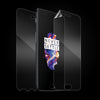 OnePlus 5 Invisible Film Screen Protector
OnePlus 5 Invisible Film Screen Protector 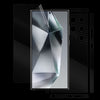 Samsung Galaxy S24 Ultra Invisible Film Screen Protector
Samsung Galaxy S24 Ultra Invisible Film Screen Protector 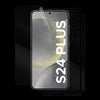 Samsung Galaxy S24 Plus Invisible Film Screen Protector
Samsung Galaxy S24 Plus Invisible Film Screen Protector 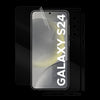 Samsung Galaxy S24 Invisible Film Screen Protector
Samsung Galaxy S24 Invisible Film Screen Protector 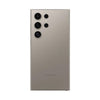 Ultimate Thin Case for Samsung Galaxy S24 Ultra
Ultimate Thin Case for Samsung Galaxy S24 Ultra 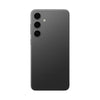 Ultimate Thin Case for Samsung Galaxy S24 Plus
Ultimate Thin Case for Samsung Galaxy S24 Plus 